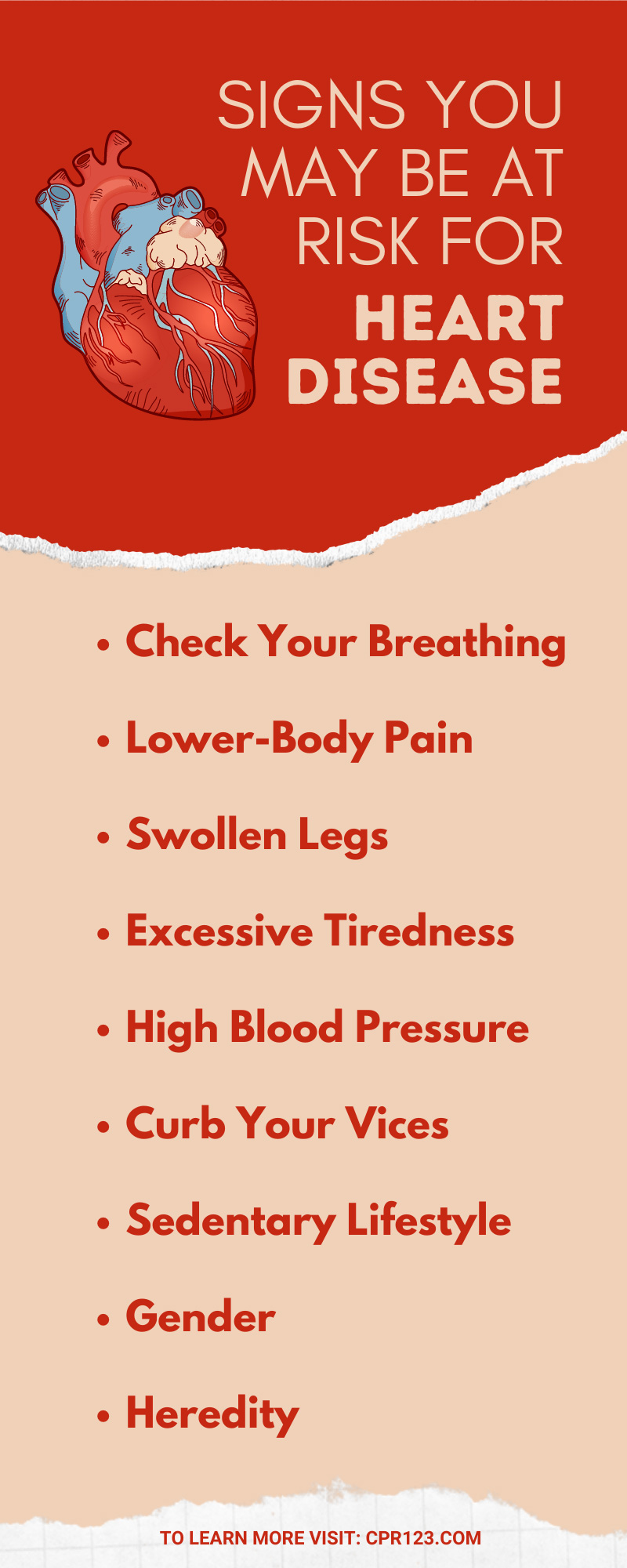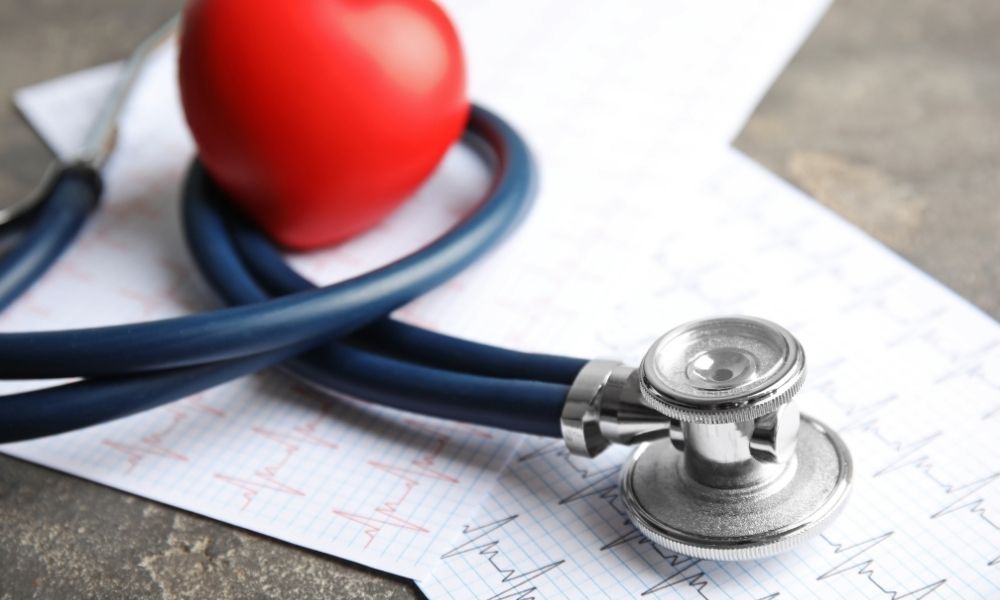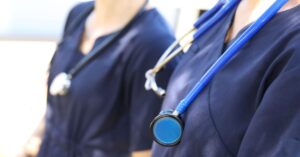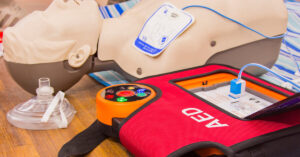Heart disease continues to be a life-threatening issue across all races, genders, and classes. If you’re over the age of 50, you should consider the possibility of facing heart disease as you age. Eating the right foods, exercising, and lowering your stress levels are all key to reducing the likelihood of developing heart disease. But what are some typical choices and biological situations that can raise or signal greater risk? Here are a few of the signs you may be at risk for heart disease.
Check Your Breathing
The way you breathe, or struggle to breathe, can be a clear sign of impending or existing heart disease. It often happens while sleeping or resting on your back. Fluid builds up in the lungs, which causes the heart to work harder at pumping oxygen through the body. This causes shortness of breath. For some people, snoring can be harmless, or it can be a sign that you’re at risk of heart disease. If you find yourself often waking up to coughing fits, wheezing, a sense of suffocation, and a rapid heart rate, explain these symptoms to your doctor.
Lower-Body Pain
Pain in the legs or hips, especially while walking, is a common symptom of heart disease. It can mean that the arteries in the legs are becoming blocked by plaque, making it harder for the heart to pump blood down there. The pain increases when you try to walk but decreases when you’re at rest because of the diminished need for oxygen. Sometimes leg pain is the result of a minor or previous injury, but if it persists while walking, tell your doctor.
Swollen Legs
Swollen ankles signal the possibility of heart diseases because they can indicate, yes, a lack of blood flow. Swelling can occur when a part of the body experiences an injury. Fluid builds up because it and white blood cells fill the area to attack any infection and keep the body part at rest. With heart disease, the legs can swell up because the circulatory system can’t help the fluid flow away from the area. Swelling can also indicate an infection or blood clot. If you notice the swelling along with shortness of breath, see your doctor immediately.
Excessive Tiredness
Everyone gets tired, but if you feel tired all the time, especially after work or activities requiring minimal physical activity, you may be at risk of heart disease. Becoming winded while cleaning or climbing a flight of stairs could mean you merely need more exercise or that you have an obstructed artery. If you feel tired after light activity, talk to your health-care provider. Note, while you should take tiredness seriously, don’t revert to avoiding all physical activity. Exercise is good for your heart!
High Blood Pressure
High blood pressure and heart disease go hand in hand. Watch your blood pressure and keep it at a healthy 120/80 (or whatever ideal rate applies to your age). If your blood pressure gets too high, you put extra stress on your circulatory system. This means they become less elastic and contribute to a decreased amount of blood and oxygen to the heart and other organs. Test your blood pressure regularly and maintain healthy habits (eating fruits and vegetables, not smoking, etc.).
Curb Your Vices
Everyone likes to indulge a little every now and then with rich foods, alcoholic beverages, and the like. But make sure it’s only an occasional indulgence. Red meats, pork, sugar, processed foods, and other foods can lead to weight gain and more bad cholesterol in the circulatory system and other parts of the body. This sets the stage for plaque build-up and a heart attack or heart failure. Eat and drink in moderation and with a healthy mindset. And don’t smoke or use tobacco products. They can cause clots in your circulatory system.
Sedentary Lifestyle
One of the biggest signs you may be at risk for heart disease is a propensity for staying put for extended periods. We are born to run, walk, swim, and otherwise exercise our bodies. Spend at least three hours a week engaged in cardiovascular activity that gets your heart rate up and your lungs breathing to deliver more oxygen to the rest of your body. If you live a sedentary lifestyle with little to no physical activity, you are at risk of heart disease and more.
Gender
In general, men are more likely to be at risk of heart disease from the age of 40 on, with women’s risk only increasing from age 55. It tends to level off around age 65, but otherwise, men are more at risk from a younger age. The reasons vary, but it can be cultural. Many men handle stress differently than women and are less likely to look after themselves, and they cover up or ignore perceived “weaknesses.” Get over it, get regular check-ups, and ask your doctor how to lower stress, eat better, and so forth.
Heredity
Sadly, sometimes you can do everything right and still be at risk of heart disease because of who you are. Heart disease can afflict a family for generation after generation and can affect specific ethnic and racial groups as well. Look into your family, and especially your parents’ past and current experiences with circulatory system issues, stress, diabetes, obesity, and, of course, heart disease and heart attacks.
If heart disease recurs, get ahead of it, and talk to your doctor about what you can do to stay healthy and alive. There are more options than you’d think. It’s also worth looking at and dropping any unhealthy habits you may have picked up from your parents or siblings.
What’s Next?
Hopefully, the above tips will help you recognize the symptoms of heart disease and mount a campaign against them for a better, healthier, and longer life. As an added caution, we suggest you and your family investigate life-saving techniques and activities, like Heartsaver CPR AED certification, just in case someone in your family experiences a heart attack or heart failure. Be prepared!








